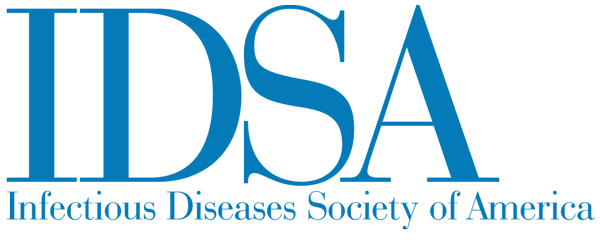Integrating services means thinking outside silos
Facebook Twitter LinkedIn EmailThe following is a guest post by Jay Gribble of Health Policy Plus and Alyson Lipsky of RTI and Health Policy Plus
Donors, implementers, and governments alike have pursued health service delivery integration to achieve cost-efficient health outcomes. Yet, often driven by the needs of a specific health issue, programs are put into silos without considering the context of the health system and the wide-ranging needs of the people it serves. Those silos may align with budgets, management structures, or health priorities, but they can undermine the health system’s capacity to respond to people’s needs efficiently. The result can be long wait times, time lost traveling to different facilities for different needs, and higher out-of-pocket expenditures. Integrating services seems like a “no-brainer” from the perspectives of efficiency and client responsiveness, but achieving an integrated service delivery model requires effort on many fronts.
Alyson Lipsky For integration to work, services should be linked. For example, people with HIV are at greater risk of contracting tuberculosis, so prevention, diagnosis, and treatment for both could be offered at the same facility. Much like the case of maternal and child health in which mothers often are with their children at the facility, there is an opportunity to address both mothers’ and children’s needs together. Other health needs that fit together are family planning and HIV. The recent trial of Evidence for Contraceptive Options in HIV Outcomes (ECHO) reminds us that they are intrinsically intertwined for some clients. We also need to think outside health program silos so that these important services work together to strengthen systems and improve client health—based on client need. Which users might need both family planning and HIV services, and at what point in the life cycle of care? Can these services be offered by the same providers and during the same visit? If we want to integrate services to improve the client experience, we need to know what kinds of policies will help make that happen. The World Health Organization identified several different ways of thinking about integrated health services. But deciding when or how to integrate services isn’t necessarily easy because of the social context, health profile, and design of the health system itself. The following examples illustrate the complexity of bringing together services that most people see as a logical fit.
- Responding to specific populations: Let’s think about integration as a package of preventive and curative health interventions for women under age 20. Services that link family planning counseling and service provision with HIV counseling and testing—coupled with treatment, if needed—could respond to the needs of many young women. Increasingly, pre-exposure prophylaxis (PrEP) is being incorporated into family planning/HIV integration to help young women prevent infection. The DREAMS partnership under the U.S. President’s Emergency Plan for AIDS Relief (PEPFAR) includes a broad range of services directed toward preventing HIV and unintended pregnancy among adolescent girls and young women. To provide integrated services for a specific population would require program guidance between two (or more) vertical programs within a country’s ministry of health (or other ministries), modification of pre- and in-service training programs within the ministries of education and health, and merging of any separate health information systems. In some countries, a policy change also may be needed to allow young women to obtain these types of services without parental or spousal approval.
- One-stop shop at point of service: If a program is seeking to provide a “one-stop shop” for users, one way of integrating these services could be at the service delivery point—focusing on all people obtaining services at that facility. A facility likely would need to expand its counseling capacity as well as its range of methods and testing. Such an expansion would require health policies that specify the level and type of providers who can provide which type of service. Service delivery and provider training guidelines would have to address how to reach the entire population with information and services and the supply chain would have to ensure delivery of the right type and amount of commodities and supplies to the correct facility. Integrating services at a facility requires cross-training of staff, commitment from ministry officials, and resources to guarantee adequate stock on hand. A study of an integrated approach in Malawi demonstrated that policy action across traditional silos is critical in achieving successful integrated service delivery. Such policy action also provides the opportunity to integrate other services that respond to the community’s needs, such as water, sanitation, and hygiene programs.
- Integrated health service system: Evidence shows that clients prefer integrated service delivery. Implementing integrated services across an entire health system would require integrating policy and management of the health system. This is a complex approach, as it can include a range of administrative and management models. Recently, Guatemala adopted a management model that improved service delivery by investing more authority to make key decisions in the subnational level. In some cases, these decisions might involve contracting with the private sector to respond to population health needs. A typical scenario incorporates cadres of integrated services providers who are overseen not by specialized supervisors for family planning or HIV, but by supervisors trained to supervise across an integrated platform of service delivery. Given the greater complexity this approach requires, the policies needed to implement family planning and HIV integration could address changes in procurement policies, greater investment in training of service providers, revision of job descriptions, development of integrated supportive supervision for health workers, and more comprehensive protocols that lay out how integrated services are to be provided. Such a high level of integration also may require changes to the legal framework for health, which in turn may require decision making by national legislatures.
Other approaches to integration exist, but these three illustrate some of the more common paradigms—responding to the needs of specific populations, providing services provided at a specific facility, or reforming the health system to fully integrate service delivery. To respond to the family planning and HIV needs of women in an integrated way, health systems should understand their respective populations’ health issues and accessibility challenges. To move forward, health system actors must identify the problem is that integration is trying to fix and which approach to integration best addresses that underlying problem. Often, the biggest challenge is breaking down the health system silos and being open to finding new ways to respond to people’s health needs. Jay Gribble is a senior fellow at Palladium and deputy director for family planning and reproductive health on the USAID-funded Health Policy Plus (HP+) project. Alyson Lipsky a health governance specialist at RTI and technical lead for stewardship on HP+.




